
| Australian Coffee Hawk Moth (formerly known as Cephonodes hylas australis) MACROGLOSSINAE, SPHINGIDAE, BOMBYCOIDEA | (donherbisonevans@yahoo.com) and Stella Crossley |

(Photo: courtesy of Dick Whitford, Mt Molloy, Queensland)

| Australian Coffee Hawk Moth (formerly known as Cephonodes hylas australis) MACROGLOSSINAE, SPHINGIDAE, BOMBYCOIDEA | (donherbisonevans@yahoo.com) and Stella Crossley |

(Photo: courtesy of Dick Whitford, Mt Molloy, Queensland)
This Caterpillar comes in a number of colours and patterns. The head is pale brown, but the body can vary from pale brown, through green, to black.
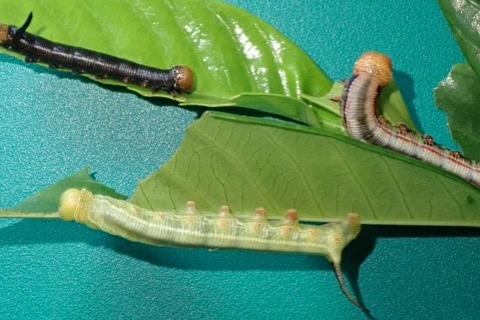
The caterpillar has a raised hump directly behind the head that is covered in short blunt spines.
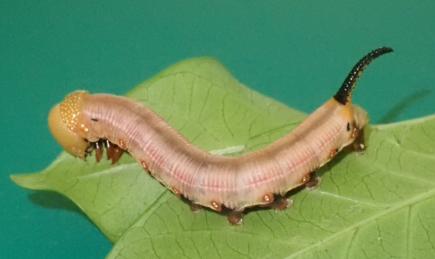
There is a single substantial black spine on the tail that is straight or curves slightly backwards. There may be vague stripes along the body, or complex patterns on the sides of the caterpillar.
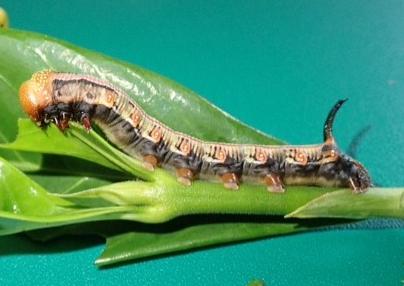
In Australia, the caterpillar has been found feeding on the native plants in the family RUBIACEAE including:
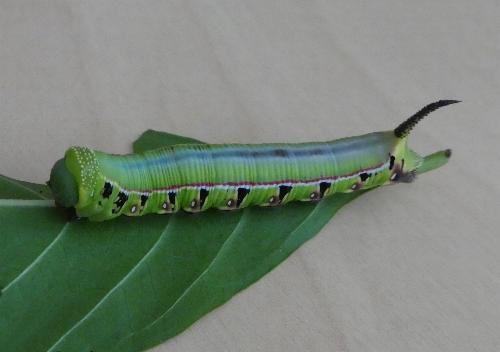
as well as the introduced:
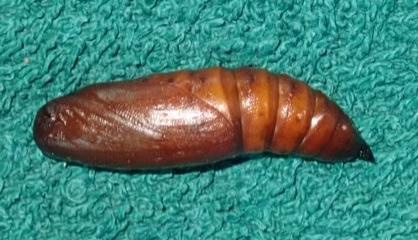
The caterpillars grow to a length of about 6 cms. The caterpillars pupate in a cell in soil at a depth of about 2 cms. The pupa is brown and shaped like a long egg, with corrugations along the abdomen, and a point at the tip. The pupa has a length of about 3.5 cms.
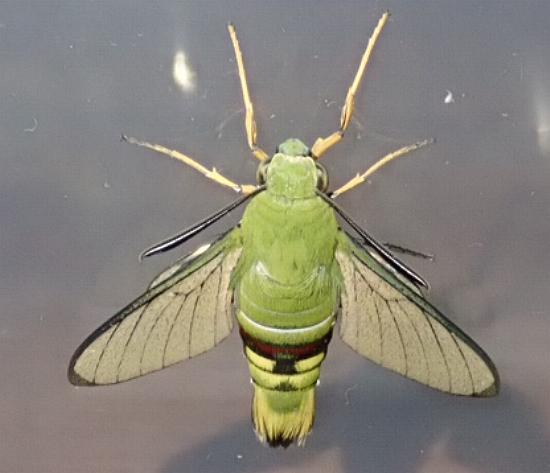
When the adult moth first emerges, it is pale green with off-white wings, and pale brown legs.
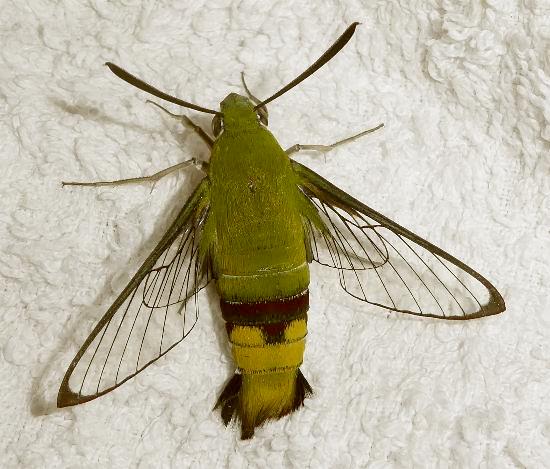
The adult moths soon lose the scales from the wings, leaving them transparent. The moths then resemble Bumble Bees, hence the name 'Bee Hawks' for the moths in this genus Cephonodes. The head, thorax, and legs become dark green The abdomen is yellow with a black band around one abdominal segment, and a dark dorsal mark on the next segment. The wings are generally transparent except that the forewings each have a slightly broader opaque area near the tip. This species has a wingspan of about 4 cms.
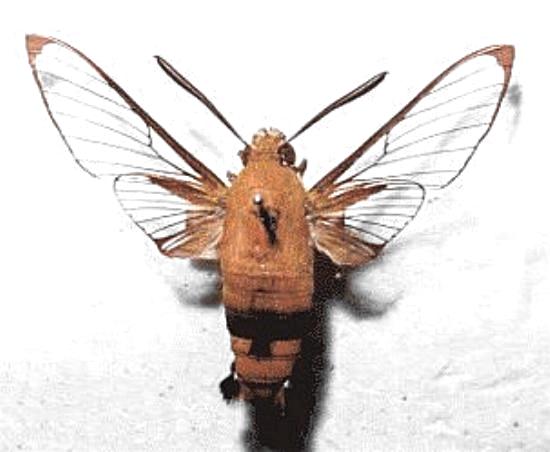
In dead specimens, the green colour fades to brown.
The species is found in:
The eggs are oval and pale green, with a diameter of about 1.2 mm. They are laid randomly, usually singly, often under leaves and on buds of a foodplant.
The adult moth is easily confused with Cephonodes cunninghami, with the main superficial differences being several tiny spikes (rather than a single large spike) at the distal end of the fore-tibia, and a white (rather than pale yellow) underside to the thorax.
Further reading :
Ian F.B. Common,
Moths of Australia,
Melbourne University Press, 1990, fig. 40.12, p. 414 (listed as Cephonodes hylas).
Ian J. Kitching & Jean-Marie Cadiou,
Hawkmoths of the World,
The Natural History Museum, London,
Comstock Publishing Associates, 2000, p. 89.
Maxwell S. Moulds, James P. Tuttle and David A. Lane.
Hawkmoths of Australia,
Monographs on Australian Lepidoptera Series, Volume 13 (2020),
pp. 72-76, Plates 10, 78, 85.
 caterpillar |  butterflies |  Lepidoptera |  moths |  caterpillar |
(updated 26 December 2009, 27 September 2024)